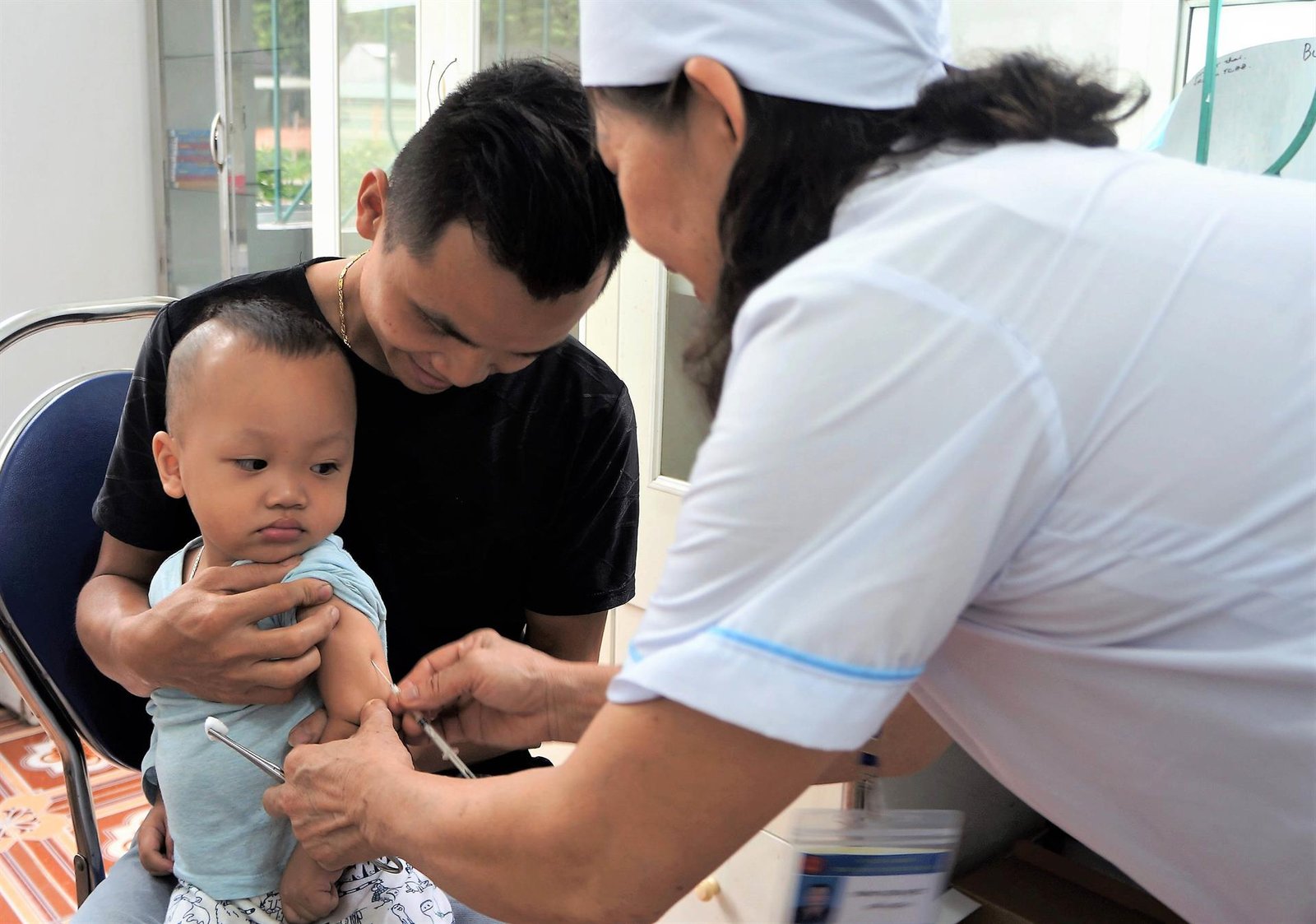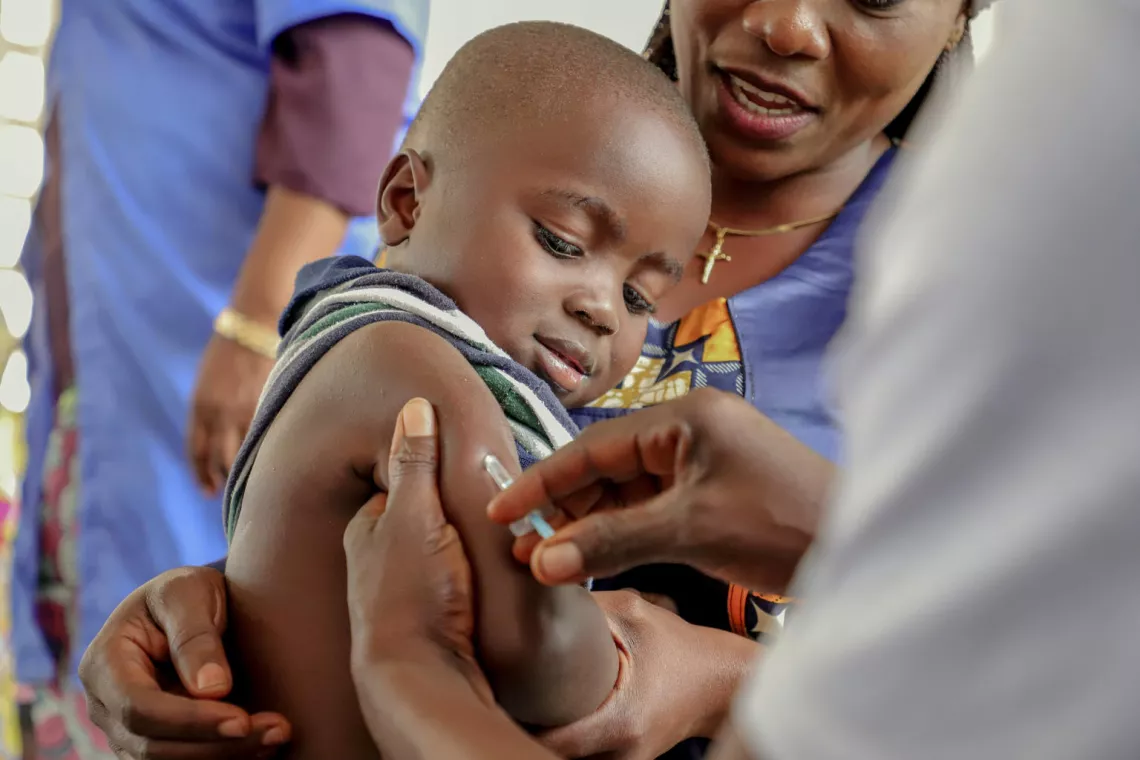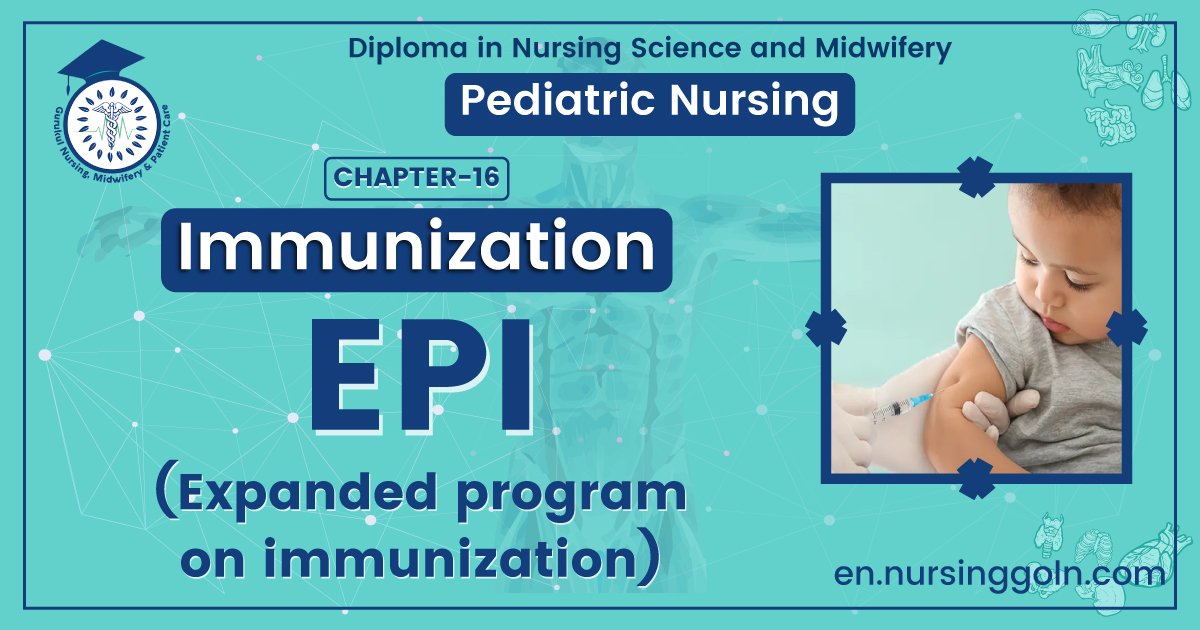EPI (Expanded program on immunization) – Health of the children has been considered as the vital importance to all societies because children are the basic resource for the future of humankind. Nursing care of children is concerned for both the health of the children and for the illnesses that affect their growth and development. The increasing complexity of medical and nursing science has created a need for special area of child care, i.e. pediatric nursing.
Pediatric nursing is the specialized area of nursing practice concerning the care of children during wellness and illness. It includes preventive, promotive, curative and rehabilitative care of children. It emphasizes on all round development of body, mind and spirit of the growing individual. Thus, pediatric nursing involves in giving assistance, care and support to the growing and developing children to achieve their individual potential for functioning with fullest capacity.
EPI (Expanded program on immunization)

Definition of EPI (Expanded programme on immunization):
WHO launched a global immunization programme known as EPI officially in May, 1974, to protect all children of the world against six vaccine preventable diseases – Tuberculosis, Diphtheria, Whooping cough, Tetanus, Poliomyelitis & Measles by the year 2000. In 1992-1993, Hepatitis-B was added to this’ list. The programme is now called universal child immunization (UCI).
Or
The Expanded Program on Immunization is a World Health Organization program with the goal to make vaccines available to all children.
Objectives of EPI:
- Decreased mortality & morbidity of infant or a child from six above mentioned disease
- Decreased disability from poliomyelitis Decreased maternal mortality
- To prevent all the children from six mentioned disease.
EPI in Bangladesh and Its Policy:
EPI in Bangladesh was formally launched on 7th April, 1979 the government of Bangladesh adopted the goal of UCI in 1985 and under this programme the following national EPI policies were developed.
➤ Immunize all children under 1 yr of age throughout the country.
➤ Immunize all women of child-bearing age including pregnant women throughout the country.
➤ Extend service delivery point upto the community to cover all target population.
➤Involve community level health and family planning workers as vaccinators.
➤ Eradication of poliomyelitis.
Present goal: EPI is committed to achieve the disease reduction goals which are.
➤ Elimination of neonatal tetanus.
➤ Reduction of measles incidence by 90% and measles mortality by 95% compared to pre- immunized period.
Strategies: Some strategies have been adopted to achieve these goals.
➤ Increase and sustain more than 90% routine immunization coverage of all antigens at all level.
Implement National Immunization days to enhance polio eradication.
➤ Organize supplementary immunization activities for neonatal tetanus elimination and measles reduction through high risk approach,
➤Strengthen AFP and EPI disease surveillance activities at all levels.
The strategies of EPI in Bangladesh:
➤ Increase and sustain more than 90% routine immunization coverage of all antigens at all levels.
➤ Implement National Immunization Days (NIDs) to enhance polio eradication.
➤ Organize supplementary immunization activities for neonatal tetanus elimination and measles reduction through high risk approach (MNT campaign).
➤Strengthen AFP and EPI disease surveillance activities at all levels.
Classification of vaccines used in EPI:
➤Live attenuated vaccine:
Bacterial- BCG
Viral- Oral polio
Measles’
➤Toxoids: Tetanus toxoid (TT)
➤Extracted cellular fractions: Pneumococcal vaccine (PCV)
➤Combined:
- Pentavalent vaccine (DPT + hepatitis B + haemophilus influenza-B)
- MR vaccine (measles + rubella)

Vaccines used in EPI:
1. BCG Vaccine (For tuberculosis).
2. Oral Polio Vaccine.
3. Pentavalent vaccine (DPT + hepatitis B + Haemophilus influenza-B).
4. Pneumococcal vaccine.
5. Measles Vaccine.
6. MR vaccine (measles + rubella).
Recent EPI Schedule in Bangladesh:
| Disease | Vaccine | Dose | Number of dose | Interval between dose | Right time of Vaccination | Site of vaccination. | Routes of Administration. |
| Tuberculosis | BCG | 0.05m 1 | 1 | After birth as soon as possible | Upper & outer part of left arm (Deltoid region) | Intradermal | |
| Diphtheria Pertussis Tetanus Hepatitis-B Haemophilus Influenza-B | Pentaval ent vaccine (DPT Hepatitis -B. Hib.) | 0.5ml | 3 | 4 weeks | 6 weeks 10 weeks 14 weeks | Uppers & outer part of mid thigh (left) | Intramuscular |
| Pneumococcal Pneumonia | PCV | 0.5ml | 3 | 4 weeks | 6 weeks 10 weeks 14 weeks | Uppers & outer part of mid thigh (Rt) | Intramuscular |
| Poliomyelitis | OPV | 2 drops | 4 weeks | 6 weeks 10 weeks 14 weeks | Mouth | Orally | |
| Measles & Rubella | MR (15) | 0.5ml | 1 | When complete 9 month | Uppers & outer part of mid thigh (Rt) | Subcutaneous |
Table 2: EPI immunization schedule of Bangladesh for women of child bearing age (15-49 years)
| Vaccine | Disease | No. of Dose | Starting time of doses | Route of Administration |
| MR | Measles & Rubella | 1 | At 15 years with the 1″ dose of TT | Subcutaneous |
| TT (Tetanus toxoid | Tetanus | 5 | TT-1: At 15 years TT-2: 28 days after TT-1 TT-3: 6 months after TT-2 TT-4: 1 year after TT-3 TT-5: 1 year after TT-4 | IM IM IM IM IM |
(Ref by: http://www.dghs.gov.bd)

Disease which is Covered through EPI Vaccination
1. Tuberculosis
2. Diphtheria
3. Pertussis
4. Tetanus
5. Haemophilus Influenza
6. Pneumococcal Pneumonia
7. Hepatitis B
8. Poliomyelitis
9. Measles
10. Rubella
Nice to Know
শিশুদের নিয়মিত টিকাদান সময়সূচি
| রোগের নাম | টিকার নাম | টিকার ডোজ | ভোজের সংখ্যা | ডোজের মধ্যে ন্যূনতম বিরতি | টিকা দেয়ার সঠিক সময় | টিকাদানের স্থান | টিকার প্ররোগ পথ |
| যক্ষ্মা | বিসিজি | ০.০৫ এম এল | ১ | জন্মের পর থেকে | বাম বাহুর উপরের অংশে | চামড়ার মধ্যে | |
| ডিফথেরিয়া, হুপিংকাশি, ধনুষ্টংকার, হেপাটাইটিস-বি, হিমোফাইলাস ইনফ্লুয়েঞ্জা-বি | পেন্টাভ্যালেন্ট টিকা (ডিপিটি, হেপাটাইটিস-বি, হিব | ০.৫ এম এল | ৩ | ৪ সপ্তাহ | ৬ সপ্তাহ ১০ সপ্তাহ ১৪ সপ্তাহ | বাম উরুর মধ্যভাগের বহিরাংশে | মাংসপেশী |
| নিউমোকক্কাল নিউমোনিয়া | পিসিভি টিকা | ০.৫ এম এল | ৩ | ৪ সপ্তাহ | “৬ সপ্তাহ ১০ সপ্তাহ ১৪ সপ্তাহ” | “ডান উরুর মধ্যভাগের বহিরাংশে” | মাংসপেশী
|
পোলিওমাইলাইটিস | বিওপিভি | ২ ফোঁটা | ৩ | ৪ সপ্তাহ | “””৬ সপ্তাহ ১০ সপ্তাহ ১৪ সপ্তাহ””” | মুখে | মুখে |
| আইপিভি (ফ্রাকশনাল) | ০.১ এম এল | ২ | ৮ সপ্তাহ | “৬ সপ্তাহ ১৪ সপ্তাহ” | ডান বাহুর উপরের অংশে | চামড়ার মধ্যে | |
| হাম ও রুবেলা | এমআর টিকা | ০.৫ এম এল | ২ | ৯ মাস ও ১৫ মাস বয়স পূর্ণ হলে | ডান উরুর মধ্যভাগের বহিরাংশে | চামড়ার নীচে |
Read more:
